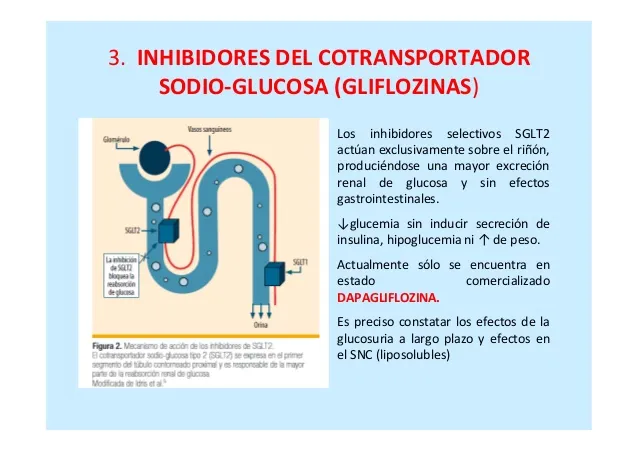Everything is little to combat one of the sanitary pests of the 21st century: type II diabetes, which appears with the deterioration of the pancreas function as an insulin generator.In the seven families of existing drugs, a new one has joined in the last half year: that of the inhibitors of the sodium-glucose transporter (generically called glyphlozines).
It is a new approach: the medicine blocks the process by which glucose exceeds blood filtering in the kidney.To do so - and continue in the bloodstream - needs the transporter.
When this is inhibited, he fails to overcome the filter and ends up expelled with the urine.It is as if in a strainer there were specific holes for glucose and sodium.The drug the plugs, so the substances do not follow in the circuit.
In this way, the person's sugar level drops by a new mechanism.In addition, sodium is also lost in the process, so blood voltage lowers, and, as a consequence of sugar output, weight is lowered, they have explained this morning in Madrid Javier Salvador, specialist in endocrinology at the University of Navarra Clinic;His colleague of the Gregorio Marañón hospital in Madrid, Susana Monreo, and the pharmacologist Antonio Fernández, by Janssen, the laboratory that manufactures one of these molecules.
Diabetes affects 13.8% of the Spanish population, said Salvador, and "in 10 years the cases have almost bent.""It is a metabolic, chronic, controllable disease, in which it is key to fight obesity, but it is not curable," he added.
"In addition to very prevalent, it is progressive," Montero added.This last quality is what makes these new drugs necessary, the endocrinologist added."The treatment lasts many years, and it is very important to have a medication that maintains its effect over time and is unhoper," said the doctor.
Glyphlozine, by removing blood glucose, avoids its toxic effect on the vessel endothelium, which reduces the damage that leads to amputations or loss of vision.
Glyphlozines offer a very interesting profile in this aspect -"I have great expectation," said Monereo.Currently, the Bristol-Myers Squibb and Astrazeneca and Astrazeneca are approved in Spain.
On Monday the Canagliflozina of Janssen has been presented, a medicine that takes a more twist since it acts against two glucose transporters instead of only one, said Fernández, which increases its effectiveness.
Referred to the latter that, to general lines, has many common characteristics with the others, monreo thus summarizes its properties: "Glucose lower, does not lose efficacy over time; it does not produce hypoglycemia; as sodium eliminates, the tension goes down; by losingUrine sugar and helps control weight (up to four kilograms are lost) ".
The nutritionist praises the latter aspects."Almost all drugs against diabetes increase weight and rise tension," he says.In this case, "at the four kilos that are lost, you have to add the four that are not won."
The laboratory tested the medication in more than 10,500 people, with a follow -up of up to six years and comparing it with existing drugs alone and "in all possible combinations," said Janssen's representative."It can be mixed with everyone," he said.
For Monereo, it is a "great product to start treatment", since it consists of a daily pill.The problem, Salvador refatized, is that the diabetes "afternoon from seven to seven and a half years to be diagnosed."
"It's a silent disease," he explained.Caught it in time is much better, but since it does not give symptoms, that happens little.That is why the doctor states that all those over 45 must look at glucose once at least every three years, and, even more, ifIt has risk factors (background, obesity, hypertension).
In cases of people with more advanced disease, it can also help, for example, withdrawing glucose, which prevents the dose of insulin from increasing, doctors said.



